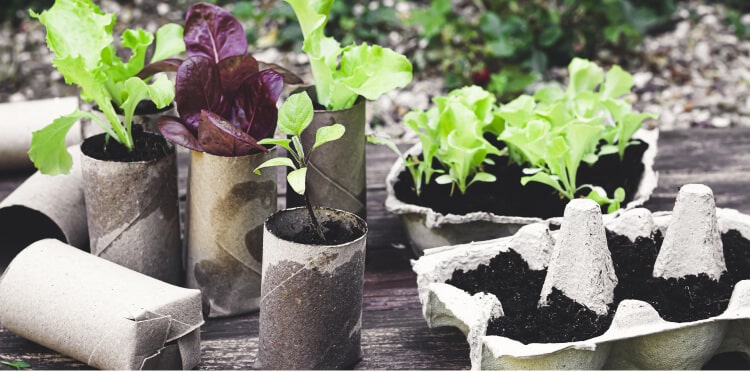Hyundai Motorstudio Senayan Park
Hyundai Motorstudio Senayan Park
Newsroom
-
11 Ingredients in Biodegradable Plastic
- Hyundai Motorstudio Senayan Park 2022.09.07
-
Biodegradable plastic is known to most people as a type of plastic waste that is easily biodegradable. The materials in biodegradable plastics will completely disintegrate in less than a year, and leave no residue or carbon footprint.
However, is it true that there are bio-degradable plastic materials that can be safely dumped on the ground? The answer is yes! If bio-degradable plastics are made from vegetable materials, then microorganisms such as bacteria or fungi will easily eat them in the soil.
Biodegradable Plastic Making Material
Apparently, there are many options for bio-degradable plastic materials to consider. That's why, we'll look at some of the ingredients listed in the best biodegradable plastics below:
1. Cassava Plant
Bio-degradable plastics are generally made from cassava starch known as tapioca flour. After extracting the juice or starch, the cassava pulp can be used for organic fertilizer or animal feed.
Cassava starch is an ingredient in commonly found bio-degradable plastics, you can even make your own at home.
2. Durian Seeds
Furthermore, biodegradable plastic can also be made from durian seeds. After eating durian, the seeds are simply thrown in the trash. In fact, durian seeds contain 44% starch to make bio-degradable plastic.
In fact, the starch content in durian seeds far exceeds that of cassava starch or sweet potato starch.
3. Shrimp shells
Some people think of shrimp shells as just trash or waste. However, if in the right hands, shrimp shells can be used as materials in bio- degradable plastic . It is known, starting from the skin, head, and tail of shrimp contain various nutritional protein compounds. In addition, there are chemical compounds such as chitosan, chitin, calcium carbamate, fat, water, and so on.
This chitosan compound in shrimp shells can be processed into bio-degradable plastic materials.
4. Bamboo
Bamboo is a great alternative to making bio-degradable plastics. Can be planted in various climates, grows fast, and maintains the fertility of the surrounding soil.
Bamboo material can be used as wet wipes, toothbrushes, to cutlery, glassware, and biodegradable plastic packaging.
5. Wood fiber
Wood is one of the raw materials in almost every industry. Starting from furniture, boats, to bio-degradable plastic packaging. As a plant that grows naturally, wood is biodegradable. In addition, wood can absorb carbon emissions during the growth process.
Currently, many materials are found in bio-degradable plastics made from wood fibers, such as disposable diapers and tableware.
6. Palm Leaves
The next ingredient in bio-degradable plastic is palm leaves. Usually, it only becomes agricultural waste that naturally falls from palm trees on plantations.
The dried palm leaves will be collected and used as fuel for traditional stove cooking. However, apparently palm leaves can be processed and shaped as biodegradable tableware.
Bio-degradable plastic made from palm leaves is used to make disposable plates, bowls or cups. Cafes, restaurants, or restaurants that want to support the concept of sustainability can choose bio-degradable plastic tableware.
7. Avocado Seeds
Maybe ordinary people rarely hear that avocado seeds can be a biodegradable plastic material. Biophase is a bio-degradable plastic made from avocado seeds. Of course, when disposed of, bio-degradable plastic from avocado seeds can biodegrade and become compost.
Biophase is generally used as straws, cutlery, or food containers as an environmentally friendly alternative to chemical plastics.
8. Mushroom Fiber
One more ingredient in biodegradable plastic, namely mushroom fiber. Mycelium is a fungal fiber root structure used as a bio-degradable plastic material.
The mycelium will be grown in the mold as an agricultural by-product and corn stalk waste. When it is ready to harvest, the mycelium will be roasted to kill the fungus. Furthermore, the mycelium is processed into a bio-degradable plastic material that is durable, versatile, and even edible.
Derived from mushroom fiber, the bio-degradable plastic material from mushroom fiber is biodegradable and reduces agricultural waste. Mycelium is usually used as an alternative material for bubble wrap, styrofoam packaging, or cooler boxes. All of these materials are designed to be more environmentally friendly and sustainable.
9. Seaweed
The next material to make biodegradable plastic is seaweed. This innovation comes from scientists from Northern France. Previously, the seaweed would be dried in the sun to dry, then ground into seaweed powder.
Then, the seaweed powder can be made into various desired shapes, such as spoons, forks, plates, or disposable cups. Seaweed material is biodegradable within 5-6 weeks.
10. Arthropod Shell
Another no less creative innovation came from scientists at Harvard University. They make biodegradable plastic made from the shells of arthropods. What is meant by arthropods are animals commonly found in the sea, fresh water, as well as land and air. Examples such as insects, shrimp, centipedes, and others.
11. Rice
Bhabha Atomic Agricultural University, Mumbai, innovated biodegradable plastic made from rice. After use, bio-degradable plastic that is thrown away or buried in the ground, can automatically biodegrade into compost, which can be used as plant fertilizer.
Even though it is made of rice, the resulting bio-degradable plastic is quite sturdy, light, and strong. Can be used as a bio-degradable plastic bag or bag that can carry hot food, fruits, vegetables, and more.
And there you have it! Environmentally friendly and sustainable biodegradable plastic materials. Hopefully, the innovation of bio-degradable plastic materials does not stop at this list. Instead, there will continue to be other great innovations from sustainable and renewable materials.
We wish this article will help you find the best alternative to bio-degradable plastic when buying eco-friendly products.




